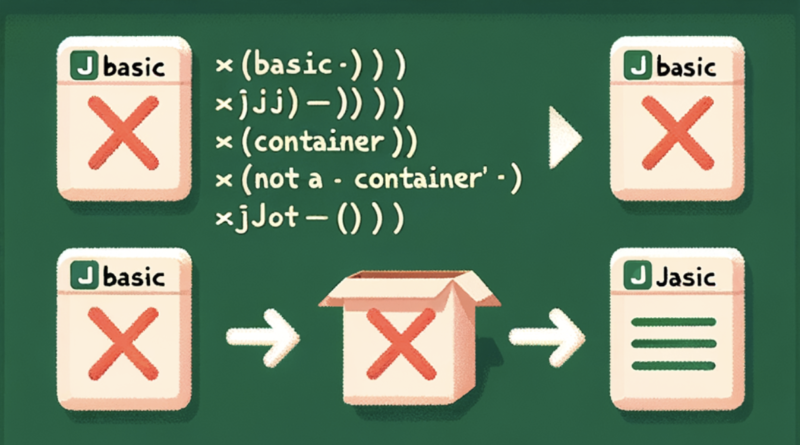When working with ORM frameworks like Hibernate or JPA in Java, defining entities and their relationships correctly is crucial. However, a common mistake developers make is mislabeling container fields (like List, Set, or Map) with the @Basic annotation, which is intended for simple, non-relational fields only. This tutorial will guide you through understanding and resolving the error: "'basic' attribute type should not be a container".
Understanding the Error 'basic' Attribute Type Should Not Be a Container
The @Basic annotation in JPA is used to denote that an attribute is a simple type directly mapped to the underlying database column. Examples of basic types include String, int, boolean, and Date. Conversely, a container type is a collection of elements, such as List<String> or Set<MyEntity>. When you mistakenly annotate these container types with @Basic, the ORM framework throws an error because it expects a basic type, not a collection.
Step-by-Step Resolution Guide
Step 1: Correct the Attribute Type
If the attribute is not intended to be a container, it should be a basic type. Here’s how you correct it:
@Entity
public class MyEntity {
// Incorrect use of @Basic for a container type
// @Basic
// private List<String> phoneNumbers;
// Corrected to a basic type
@Basic
private String phoneNumber;
}
In the corrected version, phoneNumber is now a basic attribute with a direct mapping to a database column.
Step 2: Use the Appropriate Annotation for Containers
If the attribute is meant to be a container, you should use container-specific annotations like @ElementCollection for collections of embeddable classes or basic types, and @OneToMany or @ManyToMany for collections of entity associations.
Here's how you can annotate collections correctly:
@Entity
public class MyEntity {
// Correct use of @ElementCollection for a collection of basic types
@ElementCollection
private List<String> phoneNumbers;
// Correct use of @OneToMany for entity relations
@OneToMany(mappedBy = "myEntity")
private Set<OtherEntity> relatedEntities;
}
With these annotations, the ORM framework understands that phoneNumbers is a collection of a basic type, and relatedEntities is a collection of entity associations.
Step 3: Validate the Entity Configuration
After making the necessary changes, validate your entity configuration by ensuring that:
- Each basic attribute is annotated with
@Basic(or has no annotation, as@Basicis the default). - Each collection of basic types or embeddable classes is annotated with
@ElementCollection. - Each collection of entity associations is annotated with the appropriate relationship annotation (
@OneToMany,@ManyToOne,@ManyToMany, or@OneToOne).
Example Entity with Comments
Here’s an example entity with both basic and container attributes correctly annotated:
@Entity
public class Customer {
@Id
@GeneratedValue(strategy = GenerationType.IDENTITY)
private Long id;
// A basic attribute
@Basic
private String name;
// A collection of basic types
@ElementCollection
private List<String> emailAddresses;
// A collection of entity relations
@OneToMany(mappedBy = "customer")
private Set<Order> orders;
// Getters and setters...
}
Conclusion
By following the steps outlined in this tutorial, you should now be able to understand and resolve the error "'basic' attribute type should not be a container". Always ensure that your entity attributes are correctly annotated according to their intended use as basic types or containers. Proper annotation is key to leveraging the full power of ORM frameworks and avoiding common pitfalls in your database applications.




